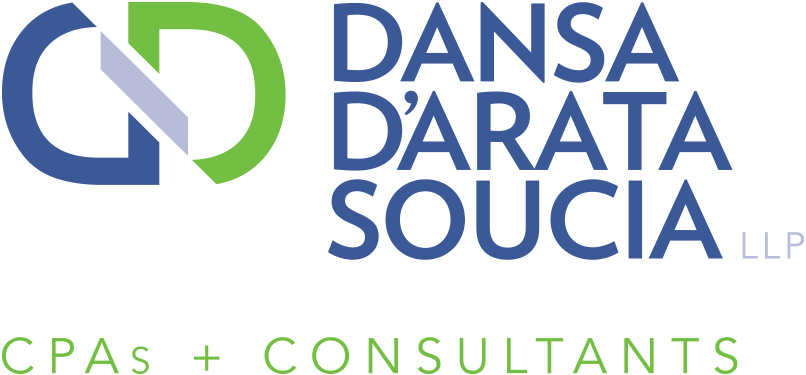Does prepaying property taxes make sense anymore?
 Prepaying property taxes related to the current year but due the following year has long been one of the most popular and effective year-end tax-planning strategies. But does it still make sense in 2018?
Prepaying property taxes related to the current year but due the following year has long been one of the most popular and effective year-end tax-planning strategies. But does it still make sense in 2018?
The answer, for some people, is yes — accelerating this expense will increase their itemized deductions, reducing their tax bills. But for many, particularly those in high-tax states, changes made by the Tax Cuts and Jobs Act (TCJA) eliminate the benefits.
What’s changed?
The TCJA made two changes that affect the viability of this strategy. First, it nearly doubled the standard deduction to $24,000 for married couples filing jointly, $18,000 for heads of household, and $12,000 for singles and married couples filing separately, so fewer taxpayers will itemize. Second, it placed a $10,000 cap on state and local tax (SALT) deductions, including property taxes plus income or sales taxes.
For property tax prepayment to make sense, two things must happen:
- You must itemize (that is, your itemized deductions must exceed the standard deduction), and
- Your other SALT expenses for the year must be less than $10,000.
If you don’t itemize, or you’ve already used up your $10,000 limit (on income or sales taxes or on previous property tax installments), accelerating your next property tax installment will provide no benefit.
Example
Joe and Mary, a married couple filing jointly, have incurred $5,000 in state income taxes, $5,000 in property taxes, $18,000 in qualified mortgage interest, and $4,000 in charitable donations, for itemized deductions totaling $32,000. Their next installment of 2018 property taxes, $5,000, is due in the spring of 2019. They’ve already reached the $10,000 SALT limit, so prepaying property taxes won’t reduce their tax bill.
Now suppose they live in a state with no income tax. In that case, prepayment would potentially make sense because it would be within the SALT limit and would increase their 2018 itemized deductions.
Look before you leap
Before you prepay property taxes, review your situation carefully to be sure it will provide a tax benefit. And keep in mind that, just because prepayment will increase your 2018 itemized deductions, it doesn’t necessarily mean that’s the best strategy. For example, if you expect to be in a higher tax bracket in 2019, paying property taxes when due will likely produce a greater benefit over the two-year period.
For help determining whether prepaying property taxes makes sense for you this year, contact us. We can also suggest other year-end tips for reducing your taxes.
© 2018



 Will you be age 50 or older on December 31? Are you still working? Are you already contributing to your 401(k) plan or Savings Incentive Match Plan for Employees (SIMPLE) up to the regular annual limit? Then you may want to make “catch-up” contributions by the end of the year. Increasing your retirement plan contributions can be particularly advantageous if your itemized deductions for 2018 will be smaller than in the past because of changes under the Tax Cuts and Jobs Act (TCJA).
Will you be age 50 or older on December 31? Are you still working? Are you already contributing to your 401(k) plan or Savings Incentive Match Plan for Employees (SIMPLE) up to the regular annual limit? Then you may want to make “catch-up” contributions by the end of the year. Increasing your retirement plan contributions can be particularly advantageous if your itemized deductions for 2018 will be smaller than in the past because of changes under the Tax Cuts and Jobs Act (TCJA). A strong economy leads some company owners to cut back on marketing. Why spend the money if business is so good? Others see it differently — a robust economy means more sales opportunities, so pouring dollars into marketing is the way to go.
A strong economy leads some company owners to cut back on marketing. Why spend the money if business is so good? Others see it differently — a robust economy means more sales opportunities, so pouring dollars into marketing is the way to go. As we approach the end of 2018, it’s a good idea to review the mutual fund holdings in your taxable accounts and take steps to avoid potential tax traps. Here are some tips.
As we approach the end of 2018, it’s a good idea to review the mutual fund holdings in your taxable accounts and take steps to avoid potential tax traps. Here are some tips. The Tax Cuts and Jobs Act (TCJA) has enhanced two depreciation-related breaks that are popular year-end tax planning tools for businesses. To take advantage of these breaks, you must purchase qualifying assets and place them in service by the end of the tax year. That means there’s still time to reduce your 2018 tax liability with these breaks, but you need to act soon.
The Tax Cuts and Jobs Act (TCJA) has enhanced two depreciation-related breaks that are popular year-end tax planning tools for businesses. To take advantage of these breaks, you must purchase qualifying assets and place them in service by the end of the tax year. That means there’s still time to reduce your 2018 tax liability with these breaks, but you need to act soon. Business owners are constantly bombarded with terminology and buzzwords. Although you probably feel a need to keep up with the latest trends, you also may find that many of these ideas induce more anxiety than relief. One example is change management.
Business owners are constantly bombarded with terminology and buzzwords. Although you probably feel a need to keep up with the latest trends, you also may find that many of these ideas induce more anxiety than relief. One example is change management. A tried-and-true year end tax strategy is to make charitable donations. As long as you itemize and your gift qualifies, you can claim a charitable deduction. But did you know that you can enjoy an additional tax benefit if you donate long-term appreciated stock instead of cash?
A tried-and-true year end tax strategy is to make charitable donations. As long as you itemize and your gift qualifies, you can claim a charitable deduction. But did you know that you can enjoy an additional tax benefit if you donate long-term appreciated stock instead of cash? Protecting your company through the purchase of various forms of insurance is a risk-management necessity. But just because you must buy coverage doesn’t mean you can’t manage the cost of doing so.
Protecting your company through the purchase of various forms of insurance is a risk-management necessity. But just because you must buy coverage doesn’t mean you can’t manage the cost of doing so. Some of your medical expenses may be tax deductible, but only if you itemize deductions and have enough expenses to exceed the applicable floor for deductibility. With proper planning, you may be able to time controllable medical expenses to your tax advantage. The Tax Cuts and Jobs Act (TCJA) could make bunching such expenses into 2018 beneficial for some taxpayers. At the same time, certain taxpayers who’ve benefited from the deduction in previous years might no longer benefit because of the TCJA’s increase to the standard deduction.
Some of your medical expenses may be tax deductible, but only if you itemize deductions and have enough expenses to exceed the applicable floor for deductibility. With proper planning, you may be able to time controllable medical expenses to your tax advantage. The Tax Cuts and Jobs Act (TCJA) could make bunching such expenses into 2018 beneficial for some taxpayers. At the same time, certain taxpayers who’ve benefited from the deduction in previous years might no longer benefit because of the TCJA’s increase to the standard deduction.